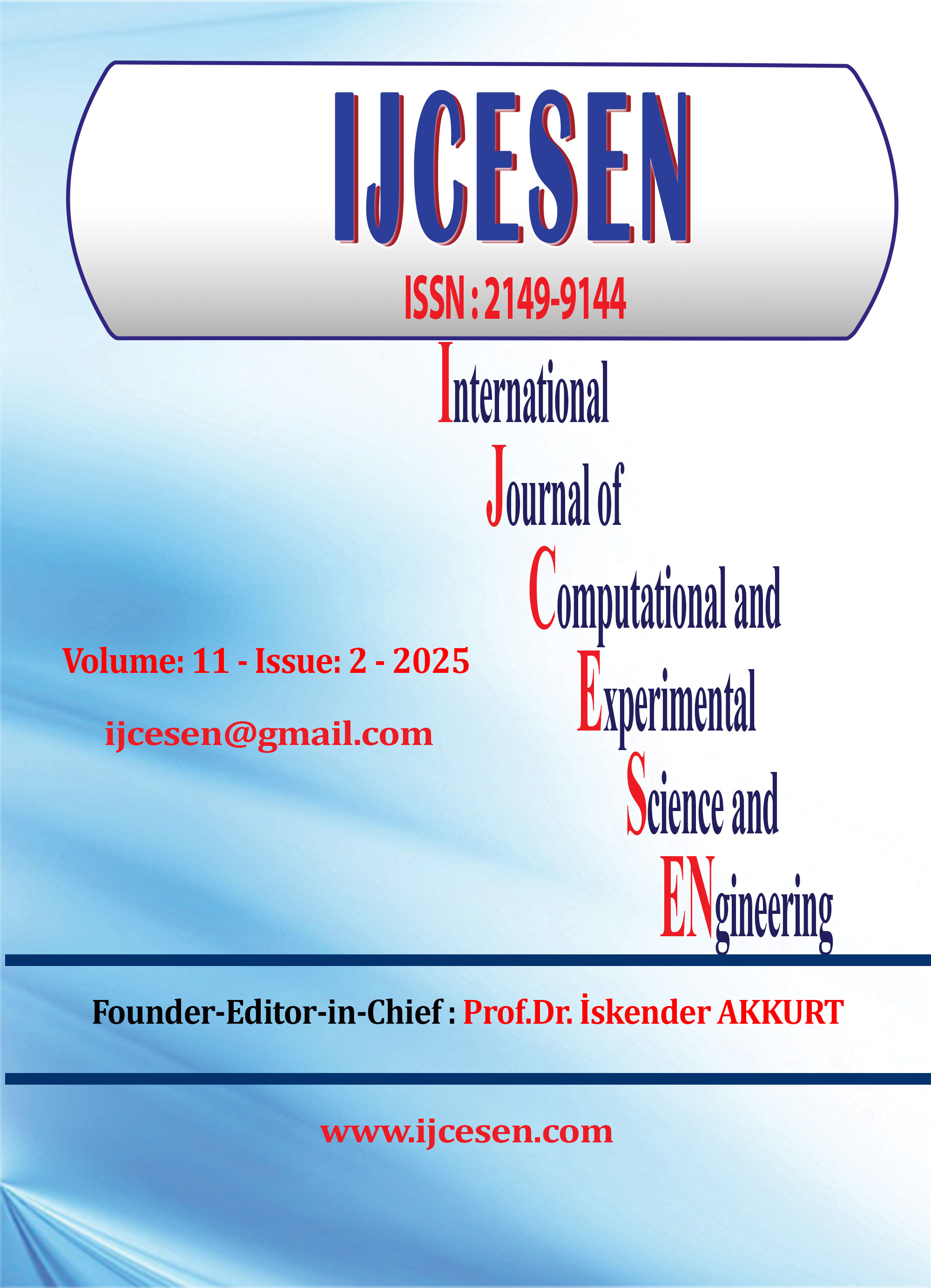A Performance analysis of downlink scheduling algorithms under SCWI and SCWF scenarios for 5G/6G communication networks
DOI:
https://doi.org/10.22399/ijcesen.952Abstract
Fifth-generation wireless technology, or 5G, is the most recent mobile telecommunications standard. With higher data speeds, reduced latency, more capacity, and better connectivity than its forerunner, 4G, it represents a considerable improvement. In 5G networks, the scheduling mechanism regulates how much data is sent between different devices and the network. Cellular networks are really used in a variety of situations, including dense (urban regions), non-dense (rural areas), ultra-dense, etc. Schedulers are formed over the base stations to effectively allocate resources to the cell's customers. These schedulers operate according to the circumstances in which they are employed. Two scenarios—Single-Cell with Interference and Single-Cell with Femto-Cell—are developed in this paper by editing the code. The defined scenarios are then implemented using the two existing schedulers: Log_Rule and Maximum Throughput (MT). These approaches are applied to the aforementioned conditions, and the results are measured in terms of throughput, packet loss ratio, latency, and spectrum efficiency.
References
[1] Shuvo, M. S. A., Hossain, M. M., Hasan, K. M., Ahmed, R., & Rahman, M. M. (2021). Energy-efficient scheduling of small cells in 5G: A meta-heuristic approach. Journal of Network and Computer Applications, 178, 102986. https://doi.org/10.1016/j.jnca.2021.102986 DOI: https://doi.org/10.1016/j.jnca.2021.102986
[2] Li, L., Shao, W., & Zhou, X. (2021). A flexible scheduling algorithm for the 5th-generation networks. Intelligent Convergence Network, 2(2), 101–107. https://doi.org/10.23919/ICN.2020.0017 DOI: https://doi.org/10.23919/ICN.2020.0017
[3] Afifi, W., El-Moursy, A., Saad, M., Nassar, S., & El-Hennawy, H. (2020). A novel scheduling technique for improving cell-edge performance in 4G/5G systems. Ain Shams Engineering Journal, 12. https://doi.org/10.1016/j.asej.2020.07.022 DOI: https://doi.org/10.1016/j.asej.2020.07.022
[4] Ramli, H., Hashim, A., Rasied, T., Asnawi, A. L., & Rahman, F. (2022). A study of an efficient scheduling algorithm for simultaneous 5G multimedia traffic (p. 118). https://doi.org/10.1109/ICONDA56696.2022.10000347 DOI: https://doi.org/10.1109/ICONDA56696.2022.10000347
[5] Abreu, R. B., Pocovi, G., Jacobsen, T. H., Centenaro, M., Pedersen, K. I., & Kolding, T. E. (2020). Scheduling enhancements and performance evaluation of downlink 5G time-sensitive communications. IEEE Access, 8, 128106–128115. https://doi.org/10.1109/ACCESS.2020.3008598 DOI: https://doi.org/10.1109/ACCESS.2020.3008598
[6] Mamode, M. I. S., & Fowdur, T. P. (2020). Survey of scheduling schemes in 5G mobile communication systems. Journal of Electrical Engineering, Electronics, Control and Computer Science, 6(2), Article 2.
[7] Mustaffa, N. (2020). A review on techniques to improve the cell edge performance for wireless networks. International Journal of Advanced Trends in Computer Science and Engineering, 9, 592–600. https://doi.org/10.30534/ijatcse/2020/8291.42020 DOI: https://doi.org/10.30534/ijatcse/2020/8291.42020
[8] Perdana, D., Sanyoto, A., & Bisono, Y. (2019). Performance evaluation and comparison of scheduling algorithms on 5G networks using network simulator. International Journal of Computers Communications & Control, 14, 530–539. https://doi.org/10.15837/ijccc.2019.4.3570 DOI: https://doi.org/10.15837/ijccc.2019.4.3570
[9] Kumar, A., & Gupta, M. (2018). A review on activities of fifth generation mobile communication system. Alexandria Engineering Journal, 57(2), 1125–1135. https://doi.org/10.1016/j.aej.2017.01.043 DOI: https://doi.org/10.1016/j.aej.2017.01.043
[10] Femenias, G., Riera-Palou, F., Mestre, X., & Olmos, J. J. (2017). Downlink scheduling and resource allocation for 5G MIMO-Multicarrier: OFDM vs FBMC/OQAM. IEEE Access, 5, 13770–13786. https://doi.org/10.1109/ACCESS.2017.2729599 DOI: https://doi.org/10.1109/ACCESS.2017.2729599
[11] Kumar, P., Kumar, S., & Dabas, C. (2016). Comparative analysis of downlink scheduling algorithms for a cell affected by interference in LTE network. Annals of Data Science, 3. https://doi.org/10.1007/s40745-016-0076-x DOI: https://doi.org/10.1007/s40745-016-0076-x
[12] Kela, P., Turkka, J., & Costa, M. (2015). Borderless mobility in 5G outdoor ultra-dense networks. IEEE Access, 3, 1462–1476. https://doi.org/10.1109/ACCESS.2015.2470532 DOI: https://doi.org/10.1109/ACCESS.2015.2470532
[13] Singh, R., Singh, P., & Duhan, M. (2014). An effective implementation of security based algorithmic approach in mobile adhoc networks. Human-centric Computing and Information Sciences, 4, 7. https://doi.org/10.1186/s13673-014-0007-9 DOI: https://doi.org/10.1186/s13673-014-0007-9
[14] Sadiq, B., Madan, R., & Sampath, A. (2009). Downlink scheduling for multiclass traffic in LTE. EURASIP Journal on Wireless Communications and Networking, 2009, 1–18. DOI: https://doi.org/10.1155/2009/510617
[15] Haque, M. E., Tariq, F., Khandaker, M. R. A., Wong, K. K., & Zhang, Y. (2023). A survey of scheduling in 5G URLLC and outlook for emerging 6G systems. IEEE Access, 11, 34372–34396. https://doi.org/10.1109/ACCESS.2023.3264592 DOI: https://doi.org/10.1109/ACCESS.2023.3264592
Downloads
Published
How to Cite
Issue
Section
License
Copyright (c) 2025 International Journal of Computational and Experimental Science and Engineering

This work is licensed under a Creative Commons Attribution 4.0 International License.





